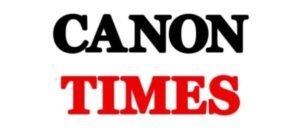Numerous academics estimated the trends in poverty and inequality when the National Sample Survey Office (NSSO) released the information sheet of the Household Consumption Expenditure Survey for 2022-23 (HCES). Measurement problems and data comparability were also covered in some of these research.
Poverty and inequality trends

Some contend that without unit-level data, the fact sheet’s estimates are tentative. Although unit-level data is more reliable than decile averages in fact sheets, poverty numbers based on fact sheet data may not differ significantly. The fact sheet data allows us to estimate poverty and inequality.
Poverty ratios decreased from 29.5% in 2011-12 to 10% in 2022-23 (1.77% per year) using the Rangarajan Committee’s poverty lines and from 21.9% in 2011-12 to 3% in 2022-23 (1.72% per year) using the Tendulkar Committee’s poverty lines. Poverty estimates based on the Tendulkar Committee’s poverty lines decreased from 37.2% in 2004-05 to 21.9% in 2011-12, a 2.18% annual fall.
Subramanian’s inequality calculations show that between 2011-12 and 2022-23, the Gini coefficient decreased from 0.278 to 0.269 for rural areas (0.009-point decline) and from 0.358 to 0.318 for urban areas (0.04-point decline). According to Bansal et al, the Gini coefficient decreased in rural regions from 0.284 to 0.266 and in urban areas from 0.363 to 0.315 between 2011-12 and 2022-23.
Poverty decreased significantly between 2011-12 and 2022-23, albeit at a slower rate than from 2004-05 to 2011-12. Between 2011-12 and 2022-23, inequality decreased significantly, especially in cities. It is important to emphasise that these estimations are based on the poverty line.
The NSSO has adjusted the data collection schedule to improve consumption reporting.
There are three consumption estimates available based on the recall period of different categories of expenditure: uniform reference period (URP), mixed reference period (MRP), and modified mixed reference period. Experts believe that using different reference periods for different goods in MMRP estimations can lead to more accurate estimates of genuine worth. The Tendulkar Committee used MRP to estimate poverty ratios in 1993-94 and 2004-05. The Planning Commission utilised the same approach and MRP to estimate poverty ratios in 2009-10 and 2011-12. Poverty estimates for 2022-23, based on MMRP, are not directly comparable to previous years. The Rangarajan Committee used MMRP to calculate poverty ratios for 2009-10 and 2011-12. The estimations are comparable to those from 2022-23. To ensure comparability, it’s necessary to maintain an appropriate mix of recall periods. This issue may be unavoidable when comparing long-term periods. In 2002-23, methodology changes included expanded coverage, multiple visits, and other adjustments. While changes can improve estimates, there is a concern about their comparability.
Measurement ratio
There has been some disagreement about measuring poverty lines. Mohanan and Kundu assert that “the Tendulkar Committee was clear that a calorie norm-based poverty line is no longer appropriate” . The Expert Group (Tendulkar) did not establish a poverty line. The official urban poverty line from 2004-05, based on the Lakdawala technique, was transformed from URP-consumption to MRP-consumption. The urban poverty line was calculated from the Lakdawala line, and then used to calculate the rural poverty level. The Lakdawala Committee’s urban poverty line included calorie restrictions, which the Tendulkar Committee adopted indirectly.
The Expert Group (Rangarajan) proposed a new consumption basket to differentiate between the poor and the rest. The basket should include a food component for adequate nutrition, a normative level of consumption for essential non-food items, and a residual set of non-food expenditure based on behaviour. The Group re-estimated the poverty basket, rather than merely updating it with new prices.
The poverty line is based on private consumption expenses.
Taking into account public expenditure, households’ actual well-being exceeds the poverty threshold.
The HCES 2022-23 attempted to calculate imputed values for some public expenditures.
Households’ value for free or low-cost items has been calculated using approved methods. The average monthly per capita expenditure (MPCE) only accounts for a small portion of the total public spending on subsidies and free items for households.
MPCE with imputation was only 2.3% higher in rural areas and 0.96% higher in urban areas. Capturing these values is crucial given the significant public investment in these areas.
Poverty levels have decreased. Consumption spending inequality has decreased little. Typically, income inequality is greater than inequality in consumption. Poverty cannot be measured in a unique way. Higher poverty cuts increase the number of impoverished people.
ABHISHEK VERMA
Author: This news is edited by: Abhishek Verma, (Editor, CANON TIMES)
Authentic news.






